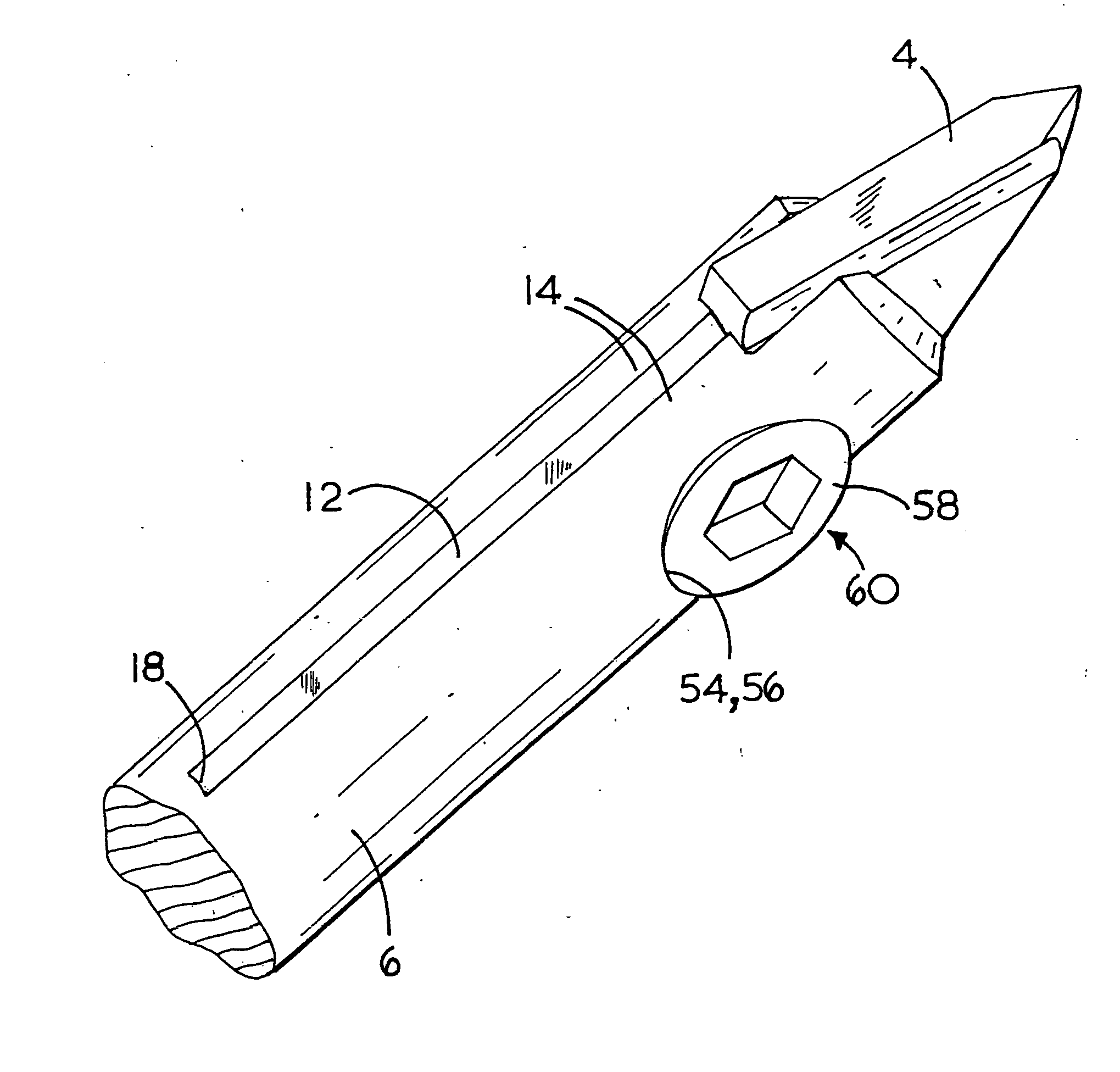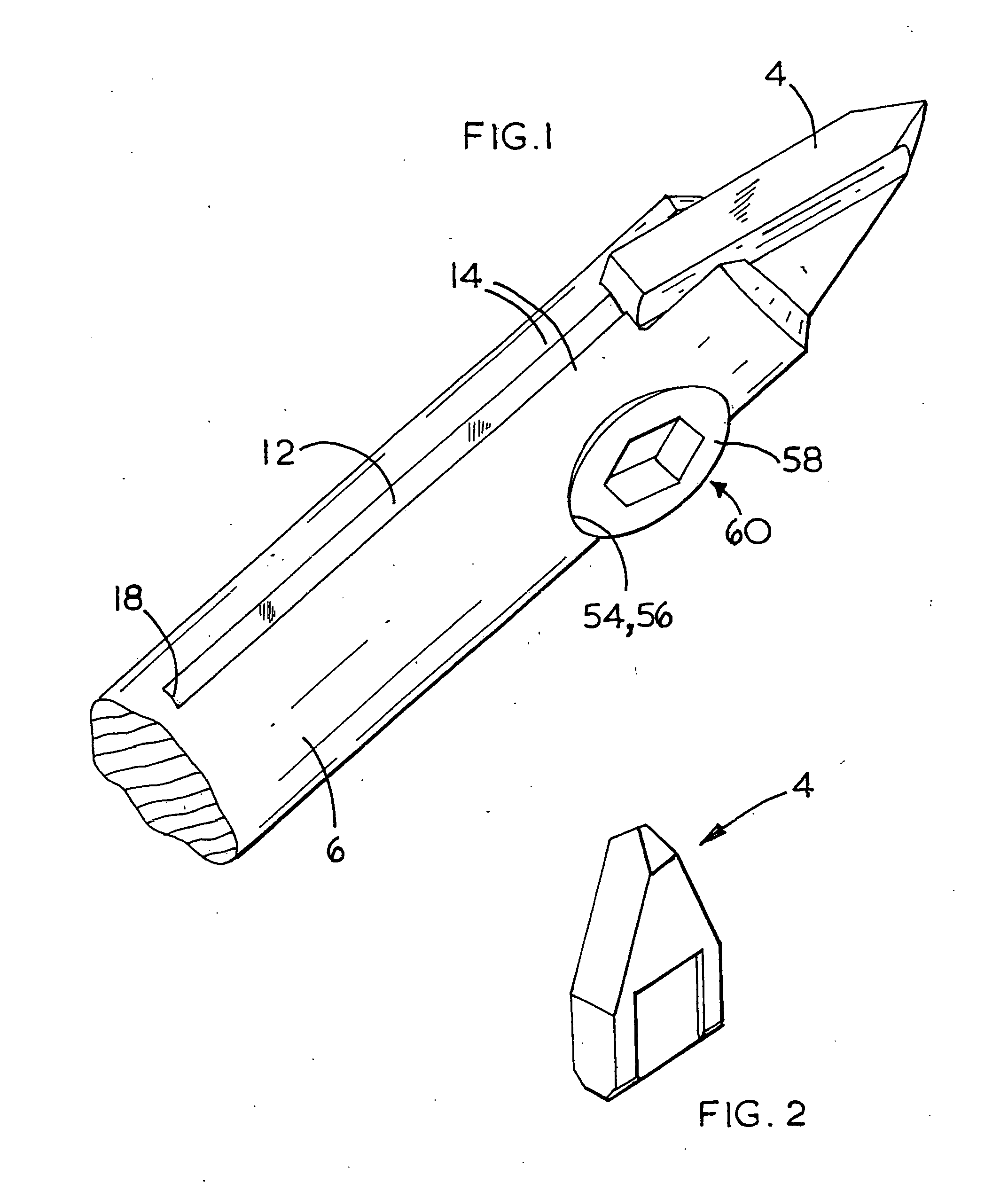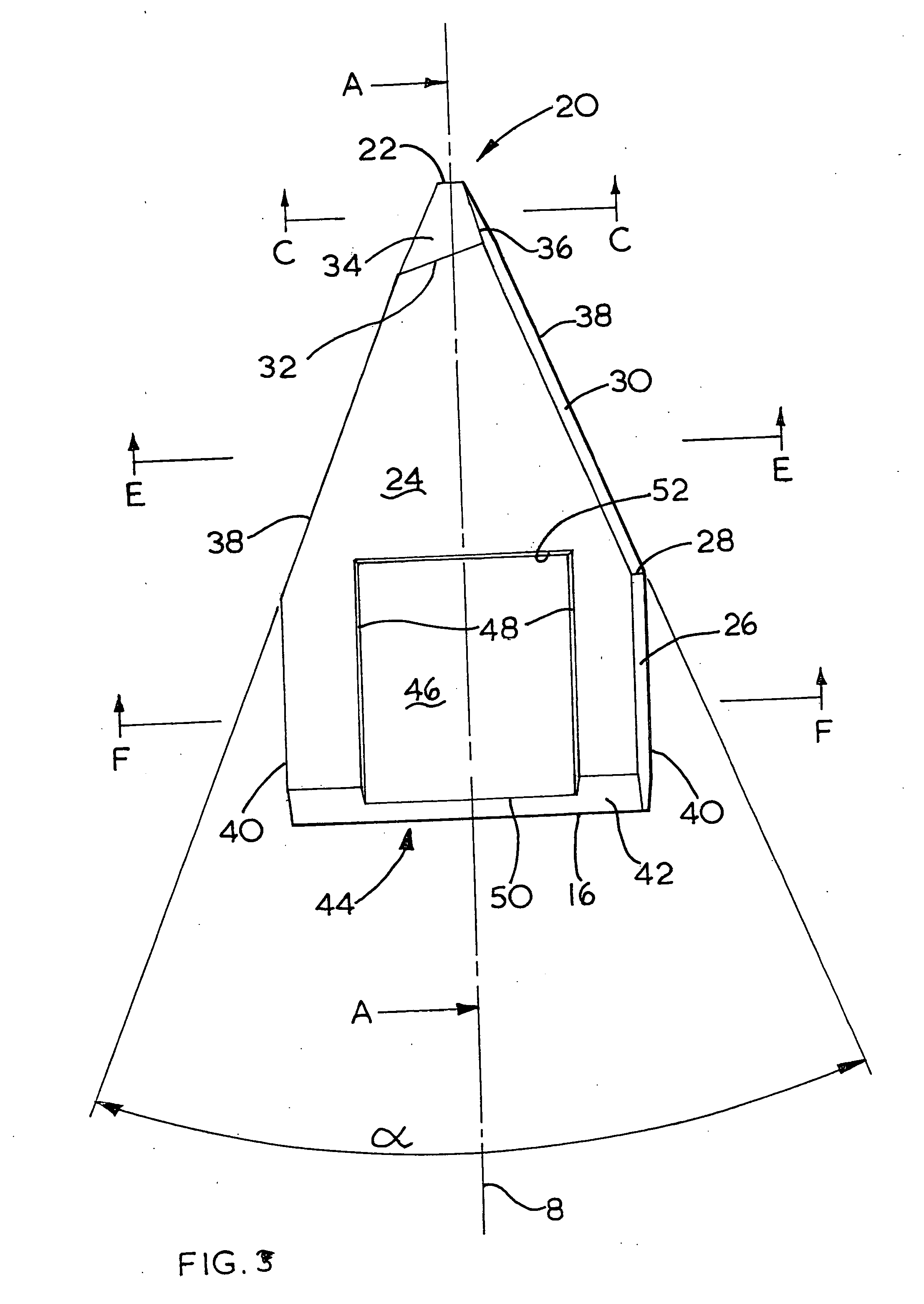Cutting plate for a drill bit
a drill bit and cutting plate technology, applied in the field of cutting plates for drill bits, can solve the problems of rotary cutting of ceramic tiles, requiring drill bits of different fixed diameters, brittle sharp cutting edges, and prone to chipping, so as to reduce the chance of chipping of cutting edges, increase cutting speed, and reduce the chance of breakage
- Summary
- Abstract
- Description
- Claims
- Application Information
AI Technical Summary
Benefits of technology
Problems solved by technology
Method used
Image
Examples
Embodiment Construction
[0031] The following description of the preferred embodiment(s) is merely exemplary in nature and is in no way intended to limit the invention, its application, or uses.
[0032] Referring to FIG. 1, a drill bit 2 is shown for rotary cutting of ceramic material. The drill bit 2 has a cutting plate 4 and an elongate cylindrical shank 6 defining a central longitudinal axis 8 of rotation. One end of the shank 6 engages a chuck of a rotary power drill (not shown). A groove 12 is at the opposite end of the shank 6. The groove 12 seats the cutting plate 4. The groove 12 is flanked by a pair of opposing jaws 14. The cutting plate 4 is removably clamped by the jaws 14 to secure it to the shank 6. The cutting plate 4 is formed from a suitably hard material like, for example, hardened steel or tungsten carbide. In use, the drill bit 2 rotates in the direction of the circular arrow R, as is shown in FIG. 4.
[0033] When viewed in front elevation, as is shown in FIG. 3, the cutting plate 4 is gene...
PUM
| Property | Measurement | Unit |
|---|---|---|
| angle | aaaaa | aaaaa |
| angle | aaaaa | aaaaa |
| angle | aaaaa | aaaaa |
Abstract
Description
Claims
Application Information
 Login to View More
Login to View More - R&D
- Intellectual Property
- Life Sciences
- Materials
- Tech Scout
- Unparalleled Data Quality
- Higher Quality Content
- 60% Fewer Hallucinations
Browse by: Latest US Patents, China's latest patents, Technical Efficacy Thesaurus, Application Domain, Technology Topic, Popular Technical Reports.
© 2025 PatSnap. All rights reserved.Legal|Privacy policy|Modern Slavery Act Transparency Statement|Sitemap|About US| Contact US: help@patsnap.com



